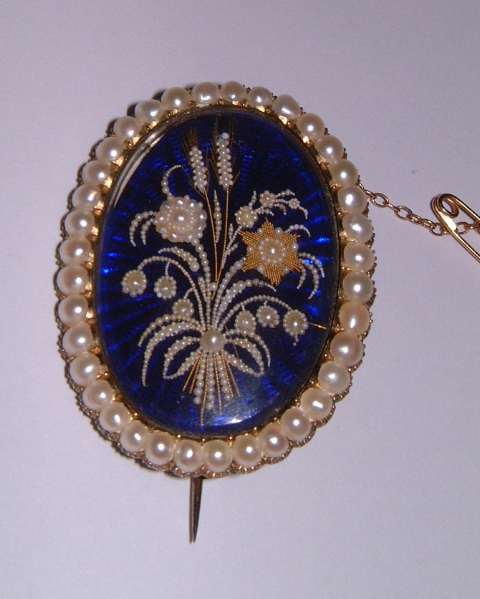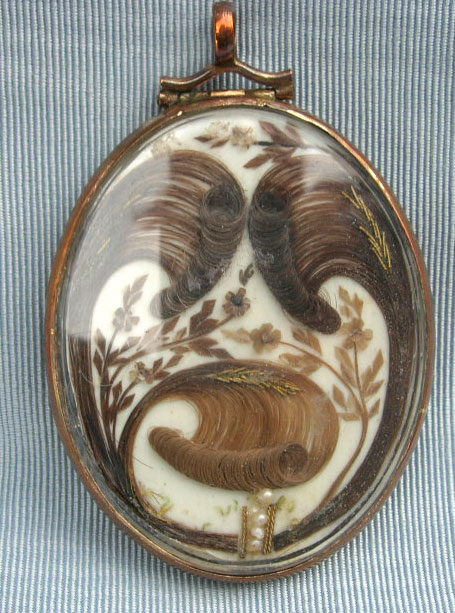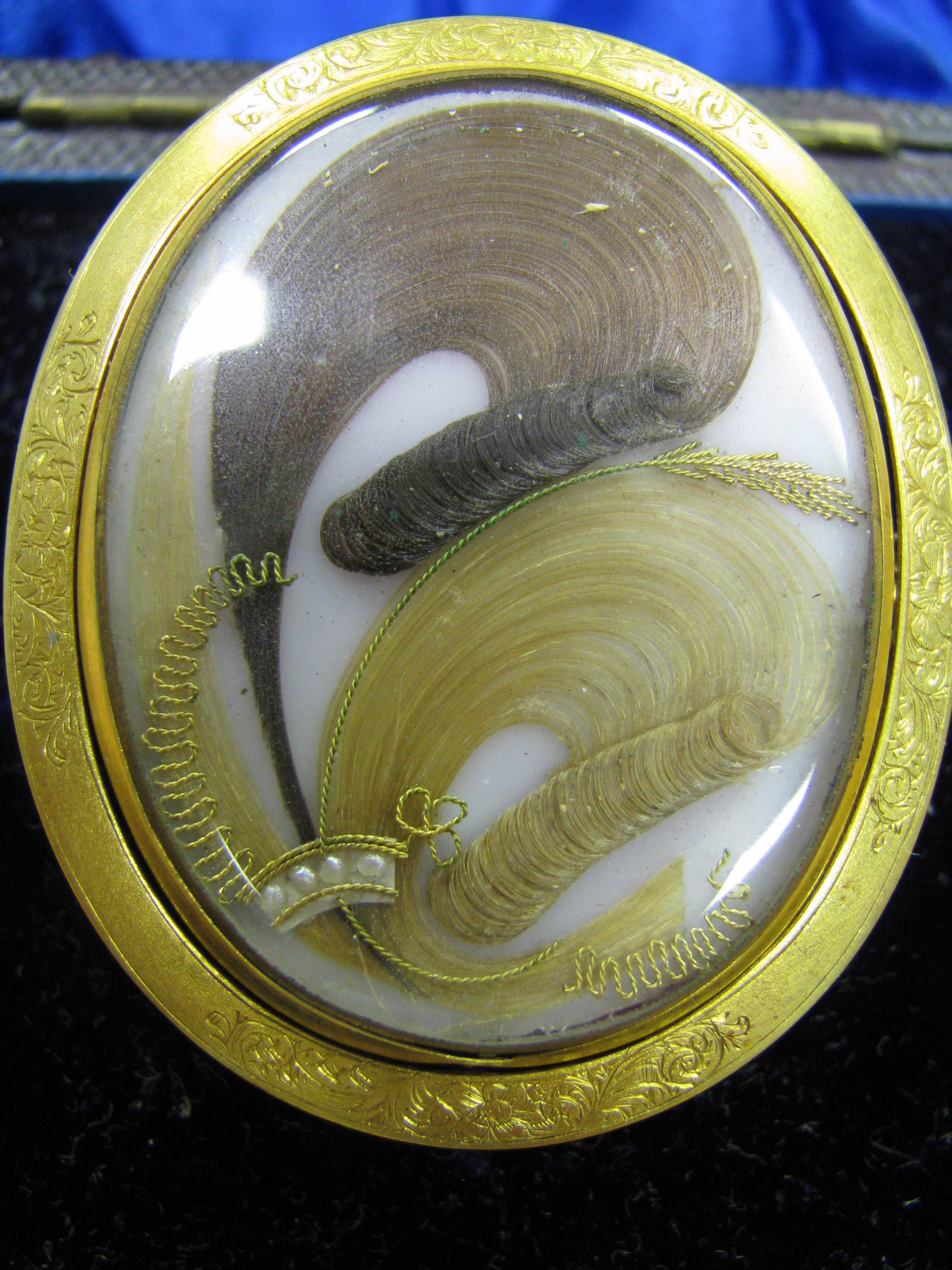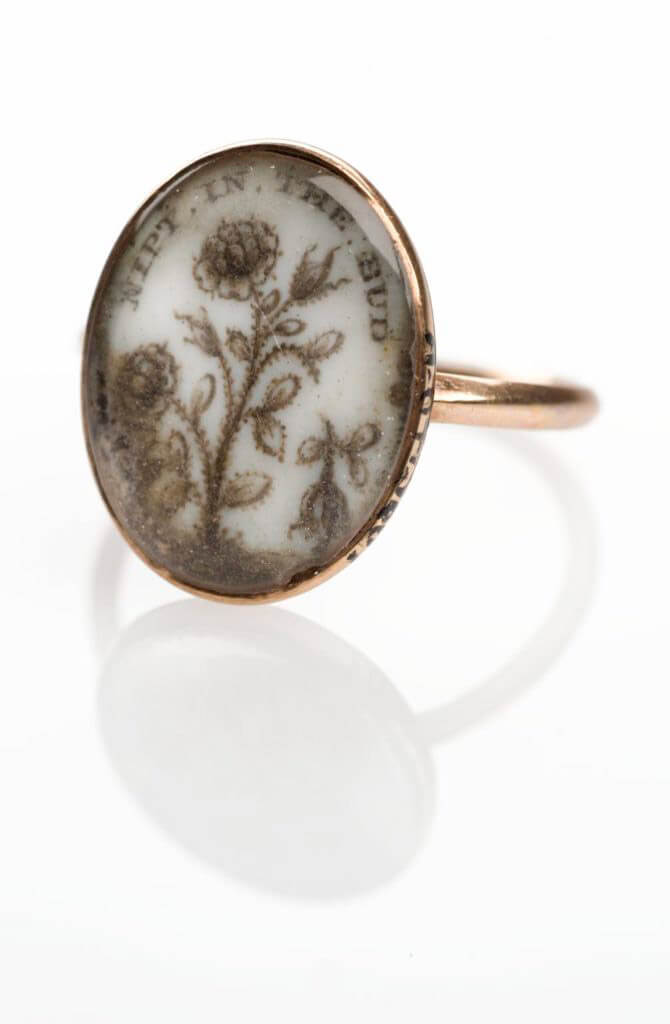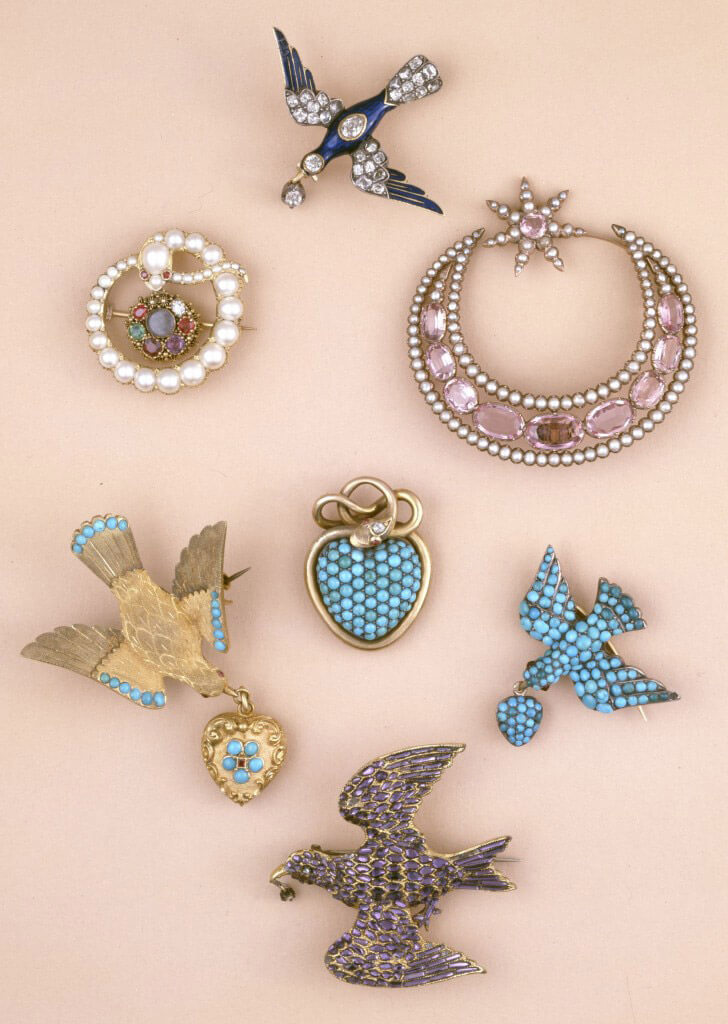Symbolism, Wheat

It’s another Sunday and you’re no doubt very hungry this morning for a good brunch, so to get you in the mood, let’s take a look at one of the more prolific symbols in neoclassical pieces; wheat.
Wheat has its symbolism baked deeply into the Bread of the Eucharist (Mark 14:22-24), a motif resonant of everlasting life through the belief in Jesus, this is when the motif is bundled with grapes. Within funeral art, we must also consider that wheat within the divine harvest would eventually be reaped (note the link back to the memento mori scythe symbol), denoting the life cut and the renewal (or resurrection) of the soul.
Why is wheat such a popular motif during a time when jewellery and art symbolism was retreating from heavy ecclesiastical symbolism? Its beauty as a symbol and apparent ambiguity as an appealing symbol makes it one of the symbols to survive the Neoclassical period through to the Gothic Revival and into the Victorian paradigm shift back towards monarchy/church/family values. Thinking that Neoclassical values led to a fundamental reaction against the church would be incorrect. Looking at the Church of England during the Restoration period on through the 19th century, there was a swing towards the importance of the self and though the values of the church were historically being challenged, there wasn’t a movement to challenge the fundamental beliefs. Hence, Neoclassical symbolism interprets much of the traditional Christian motifs into Neoclassical depictions. This is why such a magnificent symbol has lasted through to today in jewellery design. Even at a time when symbolism had reached its zenith as catalogued and indoctrinated in the mid to late 19th century (without the multiple Neoclassical interpretations), wheat was used a prominent symbol. This could be seen even in the high influx of silver pieces post 1880, with wheat flanking a centralised symbol or dedication.
Etched in bracelets, rings, lockets, set in enamel on silver or gold, encrusted with pearls, the wheat sheaf is one of the symbols that lasted into the first quarter of the 20th century on existing memorial jewellery, even when the industry itself was reaching non-existence.
Another reason for its popularity is that the wheat sheaf was one of the simpler and more decorative weaves when tableworking hair. as such, it can be found in mourning wreaths, brooches, lockets, rings, woven with gold wire, feathered or simply glued into position. Because of this versatility, wheat became more of a prominent symbol, particularly in the 1820s-60s, in hair art, rather than a secondary symbol (though it was used for this purpose as well).




